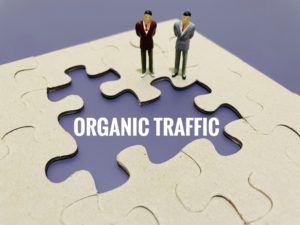The world of SEO can be a bit daunting for some. However, it’s essential to understand the basics of how it all comes together. If you run a business, blog, or want to familiarize yourself with the ways of the web, you’ll need a bit of knowledge tucked under your belt. We certainly don’t want to overload you, so we’ve put together a few essential need-to-know basics to help get you familiar with SERPs. Let’s look at what a SERP is and the most common features it provides.
 A SERP, or Search Engine Results Page, provides a listing of results found by a search engine, such as Google, when users enter a keyword query. Depending on your keyword search, you’ll receive results that vary from other users. Add to this; Google is continuously collecting and updating new information to create search results that are the most relevant to each user. This is fantastic for users and certainly keeps businesses on their toes to provide current and consistent information.
A SERP, or Search Engine Results Page, provides a listing of results found by a search engine, such as Google, when users enter a keyword query. Depending on your keyword search, you’ll receive results that vary from other users. Add to this; Google is continuously collecting and updating new information to create search results that are the most relevant to each user. This is fantastic for users and certainly keeps businesses on their toes to provide current and consistent information.
Get to Know the Most Common SERP Features
Let’s break it down and look at the most common SERP features users see. These include:
- Paid Results
- Knowledge Graphs and Panels
- Rich Snippets
- Organic Results
Paid Results: We all notice the shopping images that jump out at us at the top of a SERP. These are sponsored results, so their placement is paid for, not organically ranked. Ads will follow these shopping results and are also made up of paid results. Finally, you’ll see organic results, ranked by SEO.
 Knowledge Graphs and Panels: Think about the information you see off to the righthand side of search pages you pull up. They provide you with additional, context-specific information pulled from various sources, including rich results. The graph is the engine that gathers these sources of information, while the panel or card contains useful data, including links to the website, relevant people, and more — Google’s Knowledge Graph powers all this information. If you’ve been busy working on your SEO, this graph can have a pretty in-depth profile of your business.
Knowledge Graphs and Panels: Think about the information you see off to the righthand side of search pages you pull up. They provide you with additional, context-specific information pulled from various sources, including rich results. The graph is the engine that gathers these sources of information, while the panel or card contains useful data, including links to the website, relevant people, and more — Google’s Knowledge Graph powers all this information. If you’ve been busy working on your SEO, this graph can have a pretty in-depth profile of your business.
Rich Snippet: They provide you with an extra layer of helpful info in a search result. You’ll find this in between the description and the URL. You’ll typically find user ratings, additional information the article will provide you, and an image. They are great for SEO because it helps your search result stand out. When users are skimming the page and scrolling by, rich snippets have that eye-catching appeal, and you’ll know the outcome yields a higher click-through rate than others. This helps you get more clicks, traffic, and long term, a boost in SEO rankings.
 Organic Results: These are your unpaid results, ranked by various factors. A search engine’s algorithm determines a web page’s rank and how a SERP will appear for each keyword query. We share a more in-depth explanation of organic vs. page search that we highly recommend visiting here.
Organic Results: These are your unpaid results, ranked by various factors. A search engine’s algorithm determines a web page’s rank and how a SERP will appear for each keyword query. We share a more in-depth explanation of organic vs. page search that we highly recommend visiting here.
If your SEO game isn’t up to par or you’re just starting out, our team at Moose May would love to hear about your goals and work with you to build a robust SEO strategy. Contact us today to see how we can help!